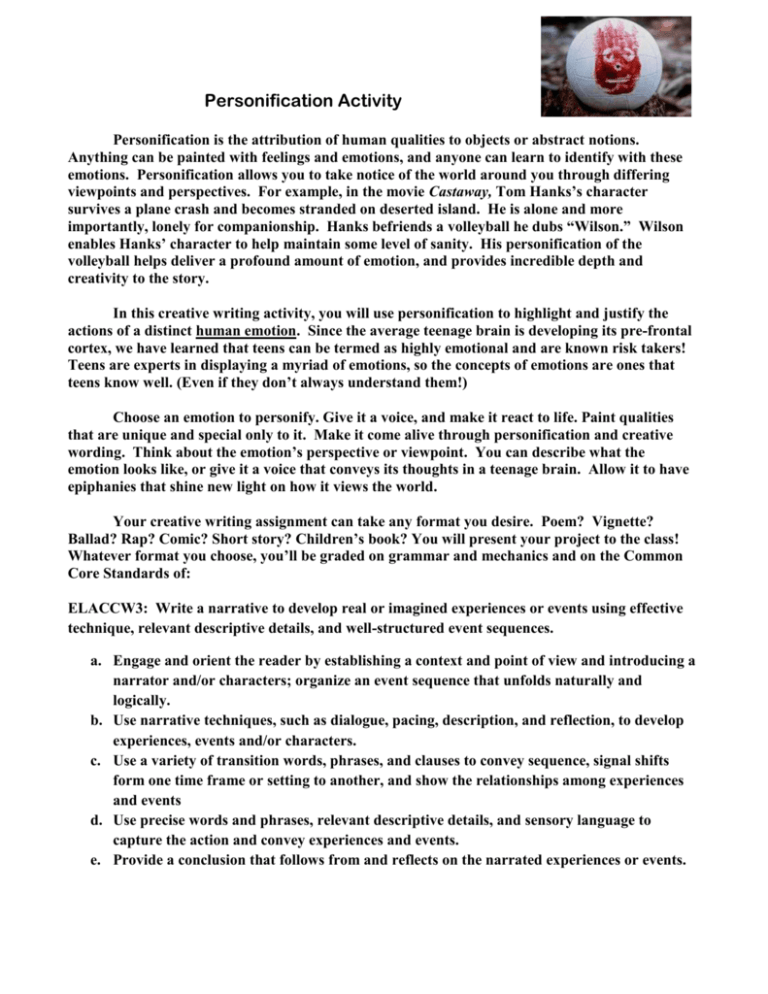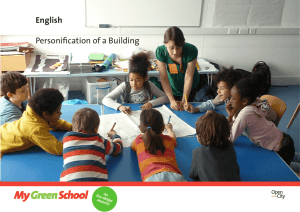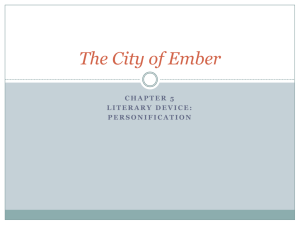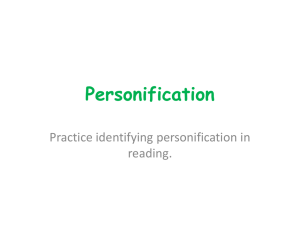Personification Activity
advertisement

Personification Activity Personification is the attribution of human qualities to objects or abstract notions. Anything can be painted with feelings and emotions, and anyone can learn to identify with these emotions. Personification allows you to take notice of the world around you through differing viewpoints and perspectives. For example, in the movie Castaway, Tom Hanks’s character survives a plane crash and becomes stranded on deserted island. He is alone and more importantly, lonely for companionship. Hanks befriends a volleyball he dubs “Wilson.” Wilson enables Hanks’ character to help maintain some level of sanity. His personification of the volleyball helps deliver a profound amount of emotion, and provides incredible depth and creativity to the story. In this creative writing activity, you will use personification to highlight and justify the actions of a distinct human emotion. Since the average teenage brain is developing its pre-frontal cortex, we have learned that teens can be termed as highly emotional and are known risk takers! Teens are experts in displaying a myriad of emotions, so the concepts of emotions are ones that teens know well. (Even if they don’t always understand them!) Choose an emotion to personify. Give it a voice, and make it react to life. Paint qualities that are unique and special only to it. Make it come alive through personification and creative wording. Think about the emotion’s perspective or viewpoint. You can describe what the emotion looks like, or give it a voice that conveys its thoughts in a teenage brain. Allow it to have epiphanies that shine new light on how it views the world. Your creative writing assignment can take any format you desire. Poem? Vignette? Ballad? Rap? Comic? Short story? Children’s book? You will present your project to the class! Whatever format you choose, you’ll be graded on grammar and mechanics and on the Common Core Standards of: ELACCW3: Write a narrative to develop real or imagined experiences or events using effective technique, relevant descriptive details, and well-structured event sequences. a. Engage and orient the reader by establishing a context and point of view and introducing a narrator and/or characters; organize an event sequence that unfolds naturally and logically. b. Use narrative techniques, such as dialogue, pacing, description, and reflection, to develop experiences, events and/or characters. c. Use a variety of transition words, phrases, and clauses to convey sequence, signal shifts form one time frame or setting to another, and show the relationships among experiences and events d. Use precise words and phrases, relevant descriptive details, and sensory language to capture the action and convey experiences and events. e. Provide a conclusion that follows from and reflects on the narrated experiences or events.








